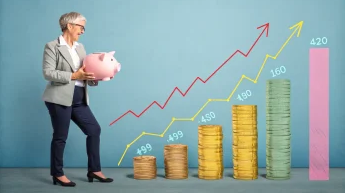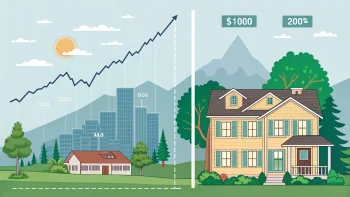In today’s society, the car you drive is a status symbol, reflecting your financial standing and personal style. However, the economic implications of owning a car, particularly a new or luxury model, can be significant and potentially detrimental to your long-term financial health.
This article will delve into the economic realities of car ownership, using real-life examples to illustrate the potential pitfalls and offer advice on making smarter financial decisions.
Carefully consider vehicle ownership if you are in or near retirement.
Table of Contents
ToggleThe financial reality of car ownership
Let’s take a look at some real-life examples. Madison, for instance, drives a 2024 Jeep Compass Latitude. This model, known for its sleek design and advanced features, comes with a hefty price tag. Madison’s monthly car payment is $598. While this may seem manageable on a month-to-month basis — it’s important to consider the long-term implications, especially if you are headed into retirement. Over a typical five-year loan period, Madison will end up paying $35,880, not including interest, insurance, and maintenance costs.
The cost of luxury
Rick, on the other hand, drives a 2020 Wrangler Sport, the 75th edition. This special edition model is even more expensive, with Rick paying $800 a month. Over five years, this amounts to $48,000. Again, this figure does not account for additional costs such as interest, insurance, and maintenance, which can add thousands of dollars to the total cost of ownership.
The high-performance price tag
Marad drives a 2023 Dodge Charger. While he didn’t disclose his monthly payment, it’s safe to assume that it’s substantial, given the Charger’s reputation as a high-performance, luxury vehicle.
The financial commitment of car ownership
Wesley drives a 2024 Power Wagon with a staggering monthly payment of $1,000. Over five years, Wesley will pay a total of $60,000 for his vehicle. This figure is higher than the median annual income in many parts of the United States, highlighting the significant financial commitment of owning such a vehicle.
The cost of luxury SUVs
Finally, Taylor drives a 2024 Jeep Grand Cherokee Overland with a monthly payment of $1,298. Over five years, Taylor will pay a total of $77,880. This is a significant sum, particularly when it does not include additional costs such as insurance and maintenance.
The long-term implications of car ownership
These examples illustrate the significant financial commitment of owning a car, particularly a new or luxury model. While these individuals may be able to afford their monthly payments, it’s important to consider the long-term implications. High car payments can limit your ability to save for the future, invest in your education, or even afford basic necessities.
Avoiding the financial trap of car ownership
So, how can you avoid falling into this financial trap? Here are a few tips:
1. Buy a used car: Used cars are often significantly cheaper than new models and can be just as reliable if properly maintained.
2. Save for a down payment: The larger your down payment, the lower your monthly payments will be.
3. Shop around for the best loan rates: Even a slight difference in interest rates can result in significant savings over the life of your loan.
4. Consider the total cost of ownership: In addition to your monthly payment, consider costs such as insurance, maintenance, and fuel.
5. Live within your means: It’s important to choose a car within your budget rather than stretching your finances to afford a luxury model.
The final word
In conclusion, while the car you drive can reflect your personal style and status, it’s essential to consider the financial implications of your choice. By making wise financial decisions, you can enjoy the benefits of car ownership without jeopardizing your financial future.
Frequently Asked Questions
Q. What is the financial reality of car ownership?
The financial reality of car ownership is that it can be a significant and potentially detrimental commitment. For example, a monthly car payment may seem manageable. Still, the total cost can be substantial over a typical five-year loan period, not including additional expenses such as interest, insurance, and maintenance.
Q. What is the cost of owning a luxury car?
The cost of owning a luxury car can be even more significant. For instance, a special edition model can cost $800 a month, amounting to $48,000 over five years. This figure does not account for additional costs such as interest, insurance, and maintenance, which can add thousands of dollars to the total cost of ownership.
Q. What are the long-term implications of car ownership?
The long-term implications of car ownership include limiting your ability to save for the future, invest in your education, or even afford basic necessities due to high car payments.
Q. How can I avoid the financial trap of car ownership?
To avoid the financial trap of car ownership, consider buying a used car, saving for a down payment, shopping around for the best loan rates, considering the total cost of ownership, and living within your means.
Q. What is the final word on car ownership?
While the car you drive can reflect your style and status, it’s best to consider the financial implications of your choice. By making better financial decisions, you can enjoy the benefits of car ownership without jeopardizing your financial future.
















